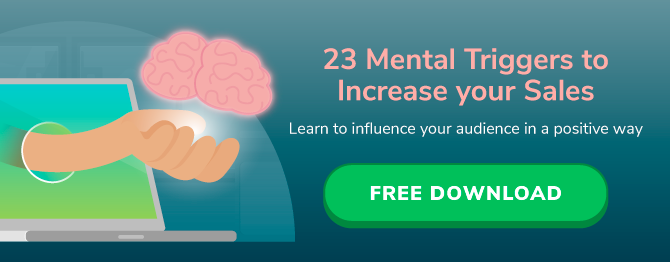
How to Create a Sales Page with Leo Leite
Roger shares everything he has learned with Leo Leite, a Hotmart specialist who has a knack for creating amazing sales pages

What will we see in this post
For the seventh episode of Hotmart MASTERS Newscast – the YouTube series where I share what I’ve learned in the first edition of Hotmart MASTERS – I talked about the 11 elements of an effective sales page, as taught by Leo Leite, a Hotmart specialist who has a knack for getting potential customers to close the deal.
In case you didn’t know yet, Hotmart MASTERS is our online, free, and global event with exclusive talks from major players in the digital market.
Today, we are going to review the main takeaways from Leo’s talk in the first edition of Hotmart MASTERS. If you want to watch the video, just hit the play! And if you want to read the transcription of the content, keep scrolling to take a look at the 11 things your sales page needs to have!
Leo has a lot of experience in the digital market and has worked with several different teams at Homart, such as marketing, research, and customer success. Over the years, he’s developed a methodology with 11 vital points that every sales page needs to answer. It’s worth following Leo’s steps if you want to have more success, speed, and ease to scale your campaigns. So, let’s go?
1. Be specific with your copy
First of all, we need to think about the copy, that is, the text that folks will read on your sales page. Your message can’t leave any room for doubt. For example, when you say that your product is amazing, sleek, and inexpensive. What is amazing? What is sleek? What is inexpensive?
Our teacher for the day, Leo, has two tips: try to cut adjectives from your sales text and don’t be general. For example, you can avoid the word success. What is success for you? Be more specific and explain what success really means in your business.
2. What motivates your persona?
Now, let’s talk about your sales methodology. You can apply these tips to ebooks, webinars, and online courses. The first step is to list the main questions that will motivate your persona or your target audience.
Let’s say you’re selling a gourmet cooking course. Can your students earn extra income in the future by taking your course now? Or, will they be able to impress friends with amazing dinner parties? These questions will guide your sales page
Want another example? Leo’s team created a fictional sales page for a product they call Zen Baby. The product looks amazing, but it only exists as a test product, got me? So as good as all of what I’m about to explain sounds, you can’t buy this.
The fictional course covers the baby’s whole routine: feeding, bathing, parent-child relationship. But we all know that the reason that gets the most attention is sleep. Every new parent wants more sleep! For the baby, yeah, but even more for themselves. That’s why the main message of the page should be: find out how to organize your baby’s routine to make sure your whole family sleeps more. Sounds good to me!
3. Create a list of objections
When you promise something to a potential customer, the person will probably have some questions like, “What’s this guy really telling me? Who’s this person to say they know how to teach me how to take care of my baby?”
The strategy goes like this: first, you promise the sky, your biggest promise about your product. Second, you take a step back recognizing the suspicion that people on your sales page are most likely having, asking them to keep calm and reinforcing the fact that there’s a solution to their problem.
4. Tell a story your persona can identify with
For the Zen Baby course, the sales page talks about parents who are anxious and stressed by their baby’s crying. Up till now, the idea is to talk with the audience and share some ideas. After generating a connection with them, the sales page needs to show that there’s a solution to the problem. And who is the perfect person to offer them help? You!
5. Build your authority
Leo explains that when building your authority and presenting your credentials, you should tell a little about your own experience with a focus on personal stories. How have you helped other people solve this problem already? Real-life examples go far in improving your credibility.

6. Offer practical advice and introduce your methodology
Then, it is time to offer some practical advice and finally, start presenting the product. What’s the transformation your course will deliver? What’s your teaching method like? Every course needs to have a methodology. Here, you’ll present this methodology through practical advice. For example, want to reduce your baby’s crying? Not only can you help your baby stop crying, but you can improve their overall health with the ancient Indian technique of Shantala massages, a tried-and-true method that has been helping parents and babies sleep more for thousands of years.
Did you see what we did there? We’re talking about a Shantala course, but the sales pitch treats Shantala as a methodology, not as the final outcome or transformation of the course. The primary focus and the final transformation being promised with the course is all that fantastic sleep parents and the baby are going to get after taking the course, and not just an Indian massage technique.
7. Create indisputable benefits
In general, a course is divided and sold by focusing on modules: sections one, two, and three. If it is an ebook, we focus on chapters. For Leo, this is a huge mistake. People are investing in transformation and not a collection of videos. His strategy is to take each part of your course and clarify what the benefit of each module or chapter is.
I’ll give you an example, in the Zen Baby course you’ll learn how giving your baby a bath can be easier and much more relaxing and how to change diapers twice as fast. These are really just modules one and two. Did you notice how explaining the benefits is much more attractive, isn’t it?
8. Clarify technical characteristics
So far, we’ve talked with the audience and gotten their attention, talked a little about your personal story and real-life success, and explained the methodology of your course. Now, it’s time to clarify the technical characteristics of your product.
You’ve convinced the potential customer that you can solve their problem, now the time has come to explain how to access the course, how long the content will be available for, and more technical details. For example, the Zen Baby course has 12 video classes, PDF materials, and 6 months of free access.
9. Who is your product for?
Next, your page needs to talk about who your product is really for and who your product is not for. By doing this, you’re reinforcing the persona you’ve drawn up.
10. Social proof and success stories
Now, let’s talk about how your methodology has already transformed people’s lives. Your page needs to present social proof and success stories. Future buyers need to see how previous customers have been transformed by your product.
This is the time for testimonials. Get people who can talk about how your methodology was important for achieving their transformation. Did you just start your business now and don’t have any customers yet? Leo thinks it’s risky to launch and sell a product without testing or getting social proof first. For those just starting out, he recommends offering a free version to a limited audience and then collecting their success stories for your sales page.
11. Unveil the price of the product
To wrap things up, what’s the best way to present the price of your product on the sales page? The key thing to think about here is anchoring. The real question is: what is the actual price of your product and why does it cost less than what it’s really worth?
You need to establish the idea that you’re offering something of absurdly high value with extra bonuses, special promotions, and exclusive access. This way, the audience feels like the final price of your product is much less than the high value it’s really worth. If a potential buyer is convinced that the price of what you’re offering them should be $1,000, they’ll be blown away when you tell them that it’s only going to cost them $500.
Anchoring. I bet that strategy has already been successfully used to convince you to buy things. Pay attention, it works!
So, did you like the strategies from Leo on how to create a successful sales page? These tips were part of the first edition of Hotmart MASTERS, our online, global and free event.
Do you want to keep going with this journey of improving your online business? Then sign up for free for the next edition of Hotmart MASTERS, which will take place from October 19th to 23rd, 2020!





